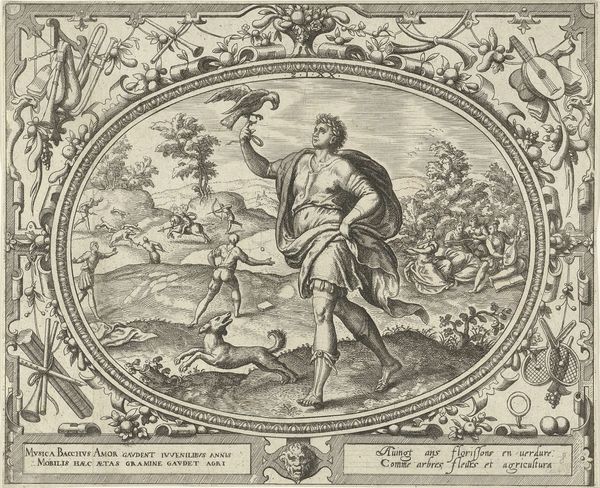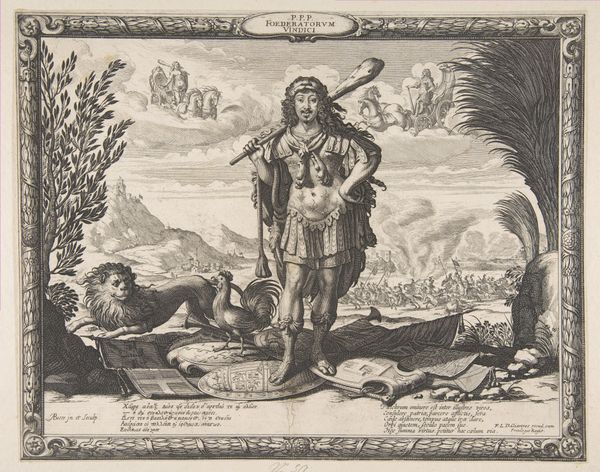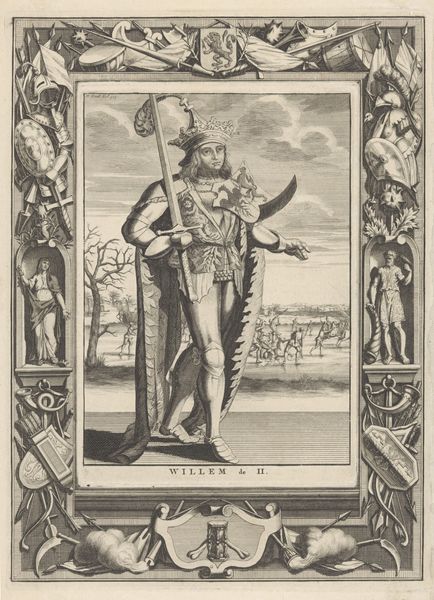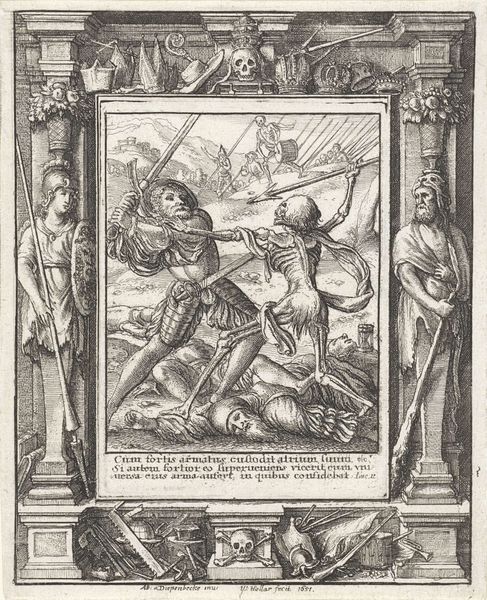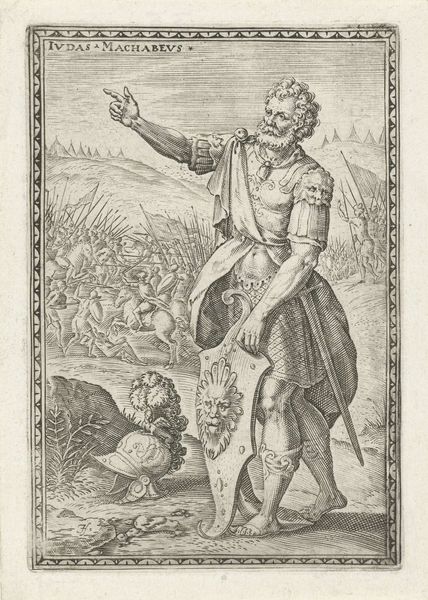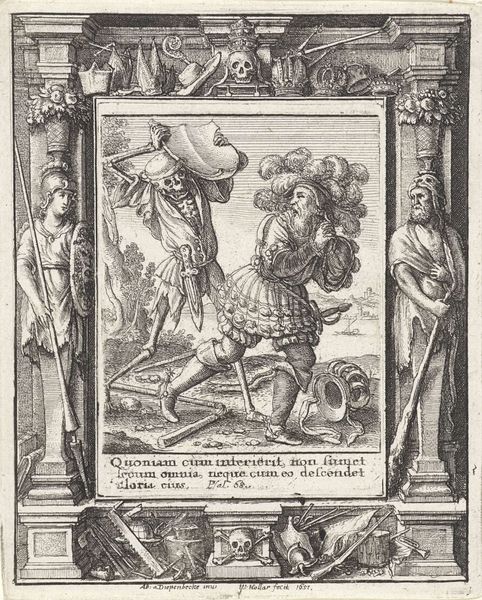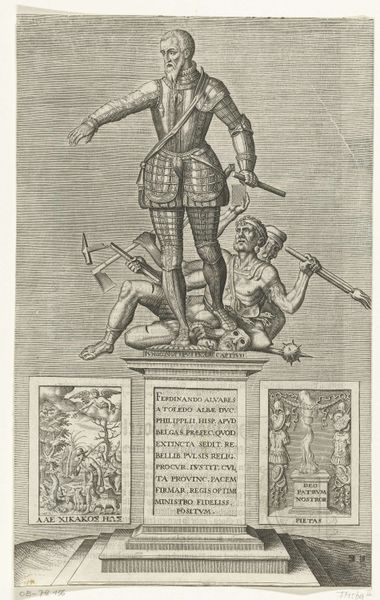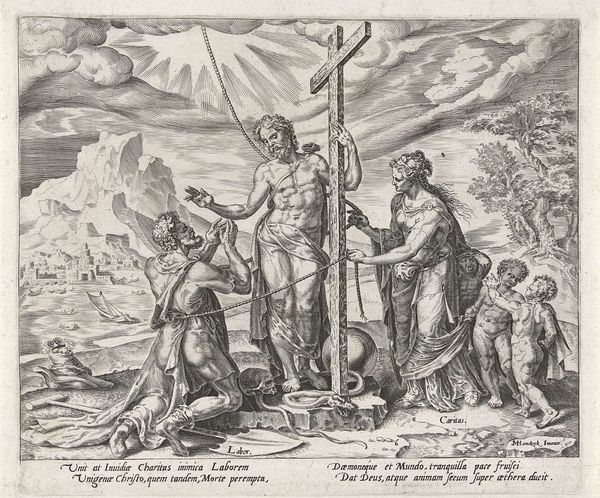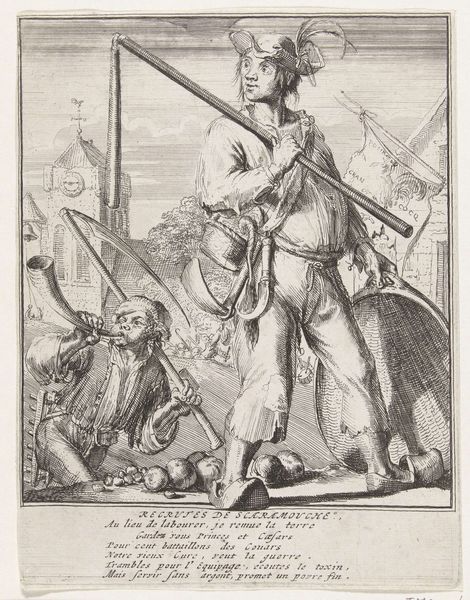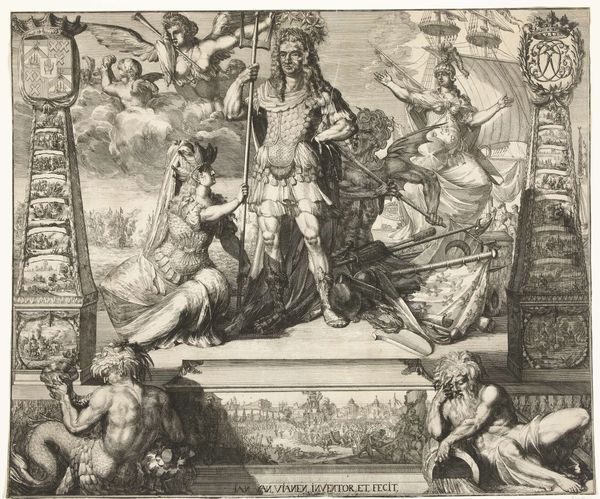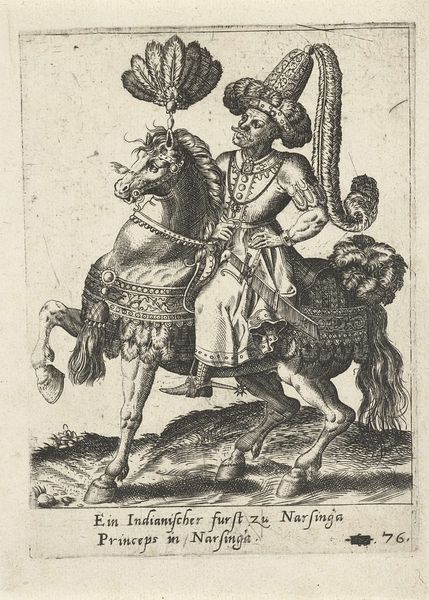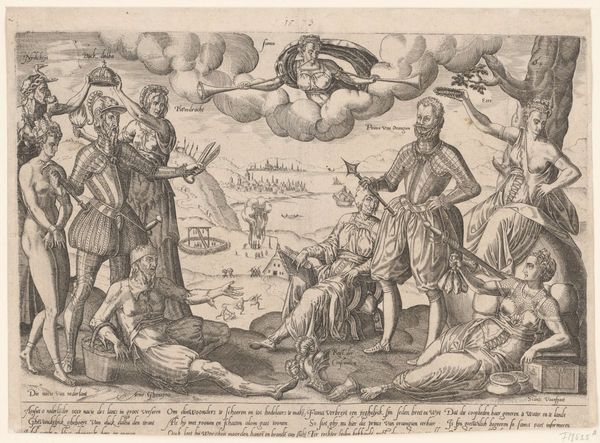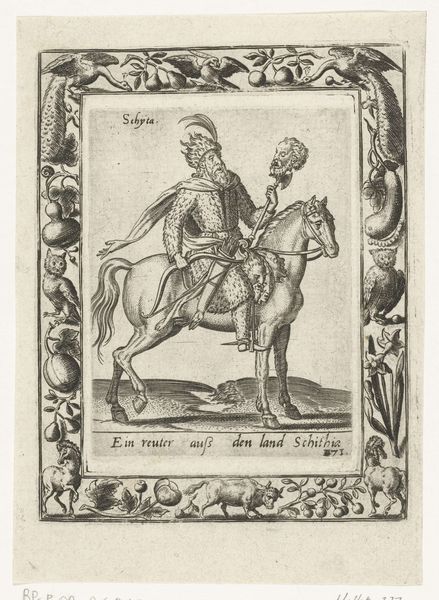
print, engraving
#
narrative-art
#
pen drawing
# print
#
pen illustration
#
old engraving style
#
landscape
#
figuration
#
line
#
history-painting
#
northern-renaissance
#
engraving
Dimensions: width 239 mm, height 198 mm
Copyright: Rijks Museum: Open Domain
Curator: I find myself immediately drawn to the stark contrasts and tightly woven allegories. Editor: And I am drawn to how history paints maturity; the work before us, housed here at the Rijksmuseum, offers precisely that: Gerard van Groeningen's engraving, "The Man at Thirty Years," created sometime between 1569 and 1575. Curator: What an impactful moment to choose for representation! Thirty marks a point where youthful folly is supposed to give way to wisdom. Do you find that sentiment echoed here? Editor: Van Groeningen situates his protagonist within a rather bellicose context, so I hesitate to say "wisdom" in the purest sense. The figure is in armor, a battle rages behind him. His potency is asserted through military strength. The figure's dominance extends not only to his physical bearing but also symbolically over social spaces—politics as conveyed through conflict. Curator: Notice his posture though; not necessarily a celebration, but rather a weighty acknowledgement. The war might rage, yes, but our central figure seems somewhat detached from it. Doesn't his inward gaze and relaxed hand on his sword hint at an acceptance of responsibility more than eagerness for battle? Editor: A clever observation! Perhaps you're suggesting a resignation or quiet contemplation of duties accepted as a marker of social status and its associated burdens? A very interesting take. The imagery almost seems split: youthful play in the foreground while mature responsibilities erupt in the distance. Curator: It suggests that tension, doesn't it? I see "play" as youthful energy properly channeled: not idle amusement, but refined martial practice—preparing for governance by proving himself able. See how those foreground figures mirror aspects of the background conflict in more restrained form? Even their poses seem to subtly echo those fighting further away. Editor: Considering it was made in the late 16th century, it reminds us how even conflict has cultural forms and expressions all its own. Curator: The way it frames character through contrast…It highlights maturation as a passage that shapes both person and epoch. Editor: And for me, this engraving serves to document both the image and political underpinnings that characterize an era.
Comments
No comments
Be the first to comment and join the conversation on the ultimate creative platform.
